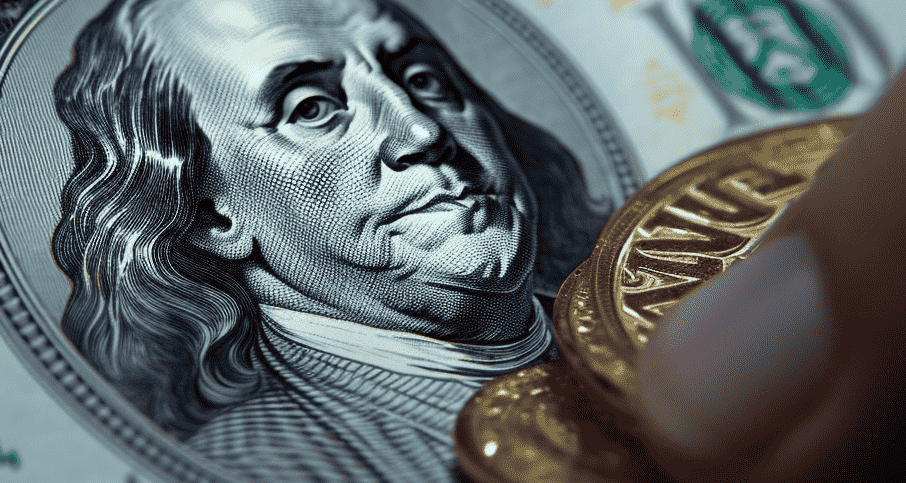Overheating Concerns Emerge as US GDP Surges
Advertisements
In the realm of global economics, few countries have made as significant an impact as the United StatesOver the past four years, the U.SGDP has witnessed an explosive growth, skyrocketing from a staggering $23.6 trillion in 2021 to a staggering $29.2 trillion todayThis uptick translates to a jaw-dropping increase of approximately $5.6 trillion—an impressive growth rate of 24%. This remarkable figure essentially means that the annual increase in U.SGDP during this period was on par with the entire economic output of Indonesia, further underscoring the scale of this economic phenomenonSuch growth is unprecedented among the 45 presidents who have governed since George Washington.
Economists examining this staggering case of growth are both intrigued and puzzledThe numbers tell a story of recovery and expansion, indicating that the post-pandemic rebound has catapulted the U.S
economy to new heightsHowever, this growth cannot merely be credited to traditional economic theories and practices.
One key factor in this economic surge is the management policies under the Federal Reserve, particularly those led by Jerome PowellPrior to March 2020, the balance sheet of the Federal Reserve totaled $4.2 trillion, a figure that had taken nearly a century to accumulateYet, in a matter of two years—driven by the unfolding pandemic—the balance sheet exploded to over $9 trillion, effectively doublingThis rapid expansion starkly contrasts with the modest accumulation of assets that occurred over nearly 100 years prior to 2008, when the Fed had only managed to reach around $800 billion.
Jerome Powell’s influence can be likened to a radical restructuring of monetary policy, often resulting in discussions around the concept of 'Powell Standard Time.' This term humorously suggests that one year under Powell’s leadership is equivalent to 282 years of conventional Federal Reserve operations
- Persistently Driving Institutional Innovation
- Fed Rate Cuts in 2025: The Risk of No Action
- Yen Slides Sharply
- Tech Giants Surge!
- Can Tech Stocks in the US Make a Comeback?
This unprecedented rate of asset acquisition and monetary expansion has defied typical economic paradigms, leading to unprecedented conditions—termed by some as 'economic overheating.' The situation is markedly different from the inflationary circumstances of the 1970s when central banks wielded significantly less power in terms of liquidity.
However, the very measures that fueled this considerable growth have begun to raise red flagsThe rapid expansion of the U.Seconomy has not come without consequences; it has created challenges, particularly related to rampant inflationThe Federal Reserve's attempts to cool down the economy through aggressive interest rate hikes and balance sheet reduction have had mixed resultsSince July 2022, signs of economic overheating have persisted, raising questions about the sustainability of such growth.
Consider the metaphor of a pot boiling over on a stove
As the heat intensifies and the water begins to evaporate—signifying the economy running hot—it becomes increasingly difficult to dial down the temperatureThe Fed's strategy to manage this 'boiling pot' has proved ineffective, leading to rising asset prices and an inability to cool down inflationary pressuresThis precarious situation is reminiscent of a high-pressure cooker where the lid may blow off at any moment.
The tumultuous state of the U.Seconomy has added layers of complexity to the political landscapeThe Democratic Party recently faced significant setbacks, mirroring the discord between the realities of economic data and political aspirationsThe stark reality is that despite an apparently robust economic landscape, underlying issues threaten to unravel the progress made.
Concurrently, on a global scale, the interplay of international relations, supply chains, and economic competition has intensified

In light of the disruptions posed by the pandemic, countries like the U.Sare tempted to siphon resources from other economies to sustain their inflationary bubble, leading to geopolitical friction and economic instability worldwide.
The upcoming political climate is likely to be characterized by heightened competition among major powers, as financial systems, trade, and technological innovations become battlegroundsThe interdependence of global economies means that what happens in the U.Sreverberates across the globe, invoking concerns about whether its economic woes could destabilize other nationsAs tensions rise in hotspots like the Middle East and between China and the U.S., the potential for significant international fallout grows.
Speculations abound about the future of the U.Seconomy and the possibility of a major transformation in global dynamicsAs financial pressures escalate and countries grapple with differing economic conditions—some in recovery while others remain stagnant or even declining—the disparity could lead to increased conflict
The prospect of a 'clash of heats' between those nations striving for progress and others struggling to keep up portends a turbulent future.
If current trends continue, we may witness pivotal shifts in both the political landscape and the global economyThe coming year is poised for significant upheavals, with events likely to reshape the status quoIndeed, 2025 could mark a transformative point where countries must navigate a new reality filled with potential shocks and reconfigurations of alliances and economic power structures.
Consequently, as economic conditions evolve, the United States must adapt its approach to policies, seeking to forge stronger relationships with other nations in response to shared global challengesAn interconnected world demands a keen awareness of the ripple effects stemming from any single nation's economic strategies.
As we dissect the U.S
Leave Your Comment